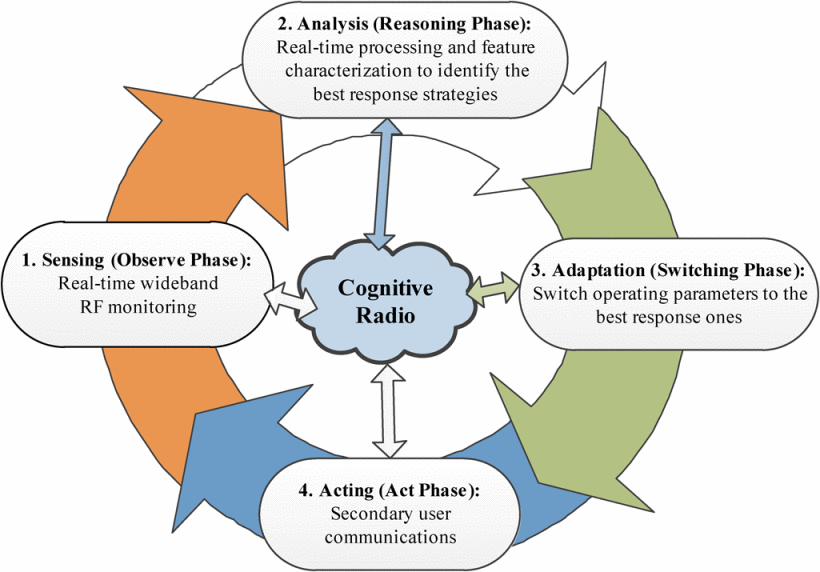Cognitive Radio
The term cognitive radio (CR) coined by Joseph Mitola is derived from cognition. Cognition is a term referring to the mental processes involved in gaining knowledge and comprehension, including thinking, knowing, remembering, judging and problem-solving. Resulting from this definition, the CR is a self-aware intelligent communication system that autonomously coordinates the usage of spectrum by identifying unused radio spectrum on the basis of observation of spectrum usage and utilizes it in efficient manner. CR may have a significant impacts on both technology and regulation of spectrum usage leading to a revolution in wireless communication.
CR, including software-defined radio (SDR) as enabling technology, is a potential technology for increasing spectral efficiency in wireless communications systems, by having sophisticated radios that can sense and take advantage of spectral opportunities. Unlicensed CR users adaptively adjust radio parameters to the network environment, resulting in improved spectral efficiency. For reconfigurability, a CR needs SDR. For other tasks of a cognitive kind, the CR requires signal-processing and machine-learning procedures for their implementation.

Three on-line cognitive tasks are:
- Radio-scene analysis, which includes estimation of interference temperature of the radio environment, and detection of spectrum holes.
- Channel identification which includes estimation of channel-state information (CSI) and prediction of channel capacity for the transmission.
- Transmit-power control and dynamic spectrum management.
The following features in a CR are identified for more efficient and flexible usage of spectrum:
- Frequency agility
- Dynamic frequency selection
- Adaptive modulation
- Transmit power control
- Location awareness
- Negotiated use
Although there are many policy and legal issues that must be resolved, CR is in the meantime an interesting research area. In case of CR, primary source detection (sensing) is one of the most important components aimed at deciding the presence or absence of a primary user in the spectrum of interest. Highly reliable sensing is needed for CR which is achievable by efficient sensing algorithms combined with collaboration and cooperation among the sensing nodes. This is one of the most important research topic in this area.
